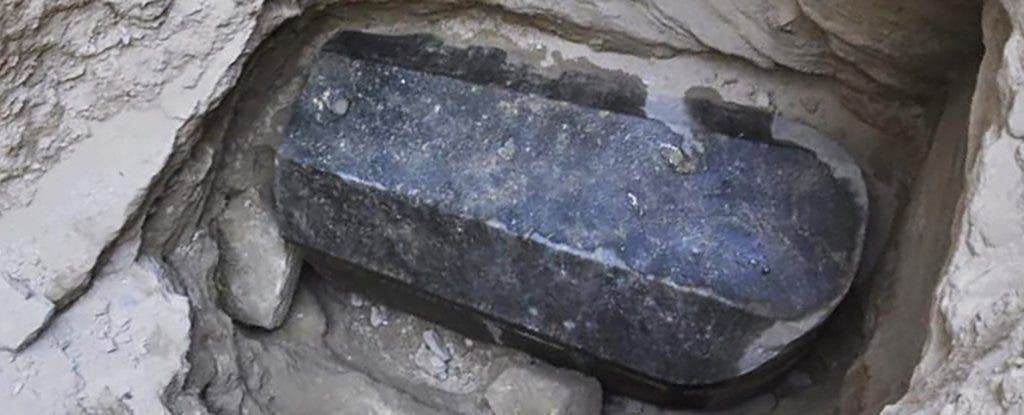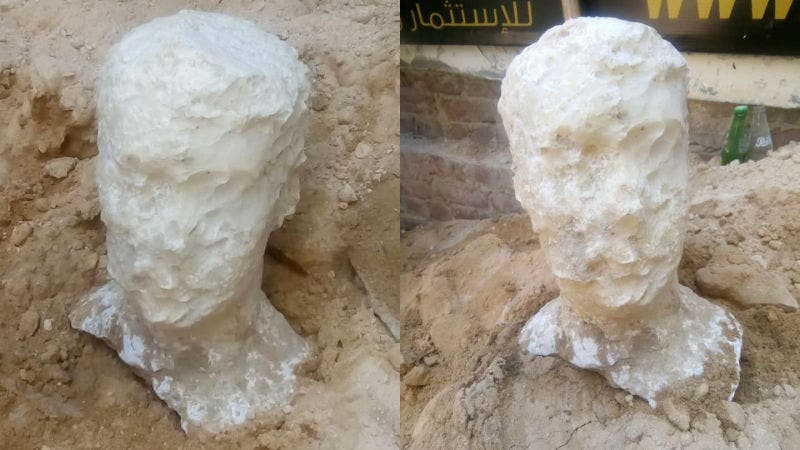Some ten days ago, archaeologists unearthed a black sarcophagus near the city of Alexandria, Egypt. The sarcophagus was a total mystery — no one know who or what was inside, and no one was really sure what to expect.
To add to the puzzle, this was the biggest sarcophagus ever found in Alexandria, measuring 185 cm (72.8 inches) in height, 265 cm (104.3 inches) in length, and 165 cm (65 inches) at its widest. Now, archaeologists have finally opened the tomb and so far, there’s no curse upon them.

The granite sarcophagus weighs 27 tonnes (59,500lb) and is believed to date from the early Ptolemaic period, which began in 323 BC after the death of Alexander the Great. Image credits: Egypt Ministry of Antiquities.
The finding has naturally sparked Indiana Jones-like curiosity in people all around the world. Some were expecting the remains of Alexander the Great, while others speculated of an ancient curse (for whatever reason) — but reality will probably disappoint both of those groups.
According to Egyptian news outlet El-Watan, the first thing archaeologists opening the sarcophagus noticed was the pungent stench — something you’d expect from a sarcophagus that’s been buried for many centuries.
Inside the sarcophagus, there were three male skeletons in a reddish-brown puddle. Their identity has not been confirmed, but the lack of any precious metals or jewelry means they’re unlikely to have been royals.
“We found the bones of three people, in what looks like a family burial… Unfortunately the mummies inside were not in the best condition and only the bones remain,” said Mostafa Waziri, secretary-general of the Supreme Council of Antiquities.
The three men were possibly warriors since one skull appeared to be injured by an arrow. An alabaster bust, its features eroded far beyond recognition, was also discovered near the sarcophagus. It seems plausible that the bust belongs to whoever was interred inside the sarcophagus, but that’s nigh-impossible to prove given the advanced state of decay.
To some, the finding may be a bit disappointing. As Gizmodo’s Adam Clark Estes put it, “there was no curse, no apocalyptic scenario, no Alexander the Great. There were just a bunch of human bones soaking in sewage.” But the finding is remarkable nonetheless.
In between the constant looting, plundering, and Alexandria’s growing urbanization, any findings in the area are noteworthy. The fact that this sarcophagus was so big and contained not one but three skeletons is also interesting, and after all, it’s still a 2000-year-old tomb that’s been unearthed.
Modern archaeology is not as much about big findings as it is about describing the lives and telling the stories of ancient people. We want to know how these people lived, how they started families and built things, how they faced struggles and what they liked to do. In that regard, this finding is as important as any.










